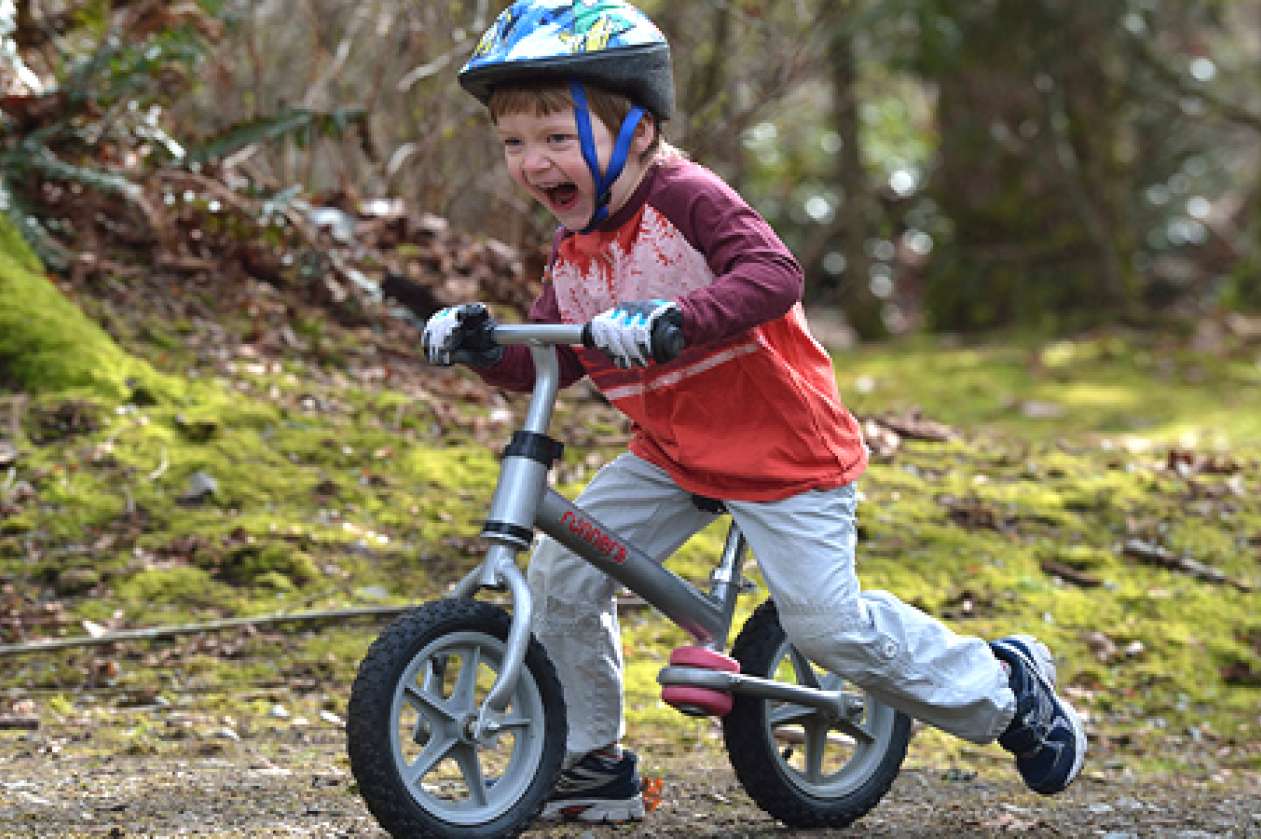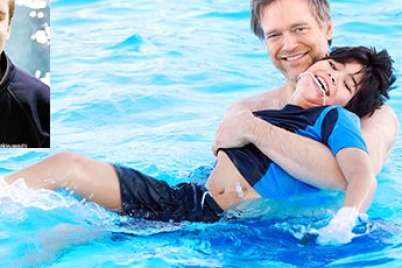
Can-Bike helps kids learn cycling safety
Learning to ride a bike is a rite of passage for most Canadians. Many of us learned to navigate two wheels while our moms or dads ran alongside us, eventually letting go as we wobbled away, nervous but proud and awed by that early taste of freedom.
Even for those of us who didn’t become lifelong riders, now that we’re the parents it’s second nature to get our kids on bikes and help them achieve that same feeling.
What may not come as naturally is moving beyond the basics and teaching our kids the skills they need to ride safely. As Valerie Free explains, it’s about making sure that our kids are part of “the same conversation” with others on the road.
I know this is true for me. In our family, all four of us have bikes and everyone knows how to get from point A to point B. But one of my biggest misgivings about venturing out for bigger family bicycling adventures is that I know we haven’t yet taught them everything they need to be safe on the road. And even worse, I am not confident that I even know myself.
Learning bicycling safety
That’s where cycling educators come in. It’s a concept that may be unfamiliar, but as a mom whose kids are getting old enough to start going on family bike rides, I find it very appealing.
Can-Bike is a bicycle safety education program currently being delivered across Canada. Valerie is one of three certified Can-Bike cycling instructors in Quebec.
How to find a program
Check out the Can-Bike website to contact an instructor near you.
Also watch for Can-Bike programs that are part of summer camps, municipalities, and schools. If these programs aren’t being offered where you live, raise your hand and ask for them. The more demand there is for bicycle safety education, the more opportunities there will be for kids to learn skills that will give them the confidence they need to keep bicycling for fun and for life.
If you can’t find a program in your area there are videos at the Can-Bike site that you can review with your children, but note that they were created for kids aged 9 and up.
Valerie grew up in the UK. “I’m of a generation that does remember the freedom to play with other kids unsupervised,” she says, “and off we would go on our bikes. I don’t remember lessons but we learned to navigate traffic and I think if you can learn that young that confidence is going to stay with you and does transfer to when you are actually driving a car later.”
Today’s kids don’t explore the world on their bikes in the same way. That’s one reason to check out the Can-Bike courses.
According to Valerie, “cycling education is surely needed. There is a revived interest in promoting active transportation, the health aspects, and getting kids active.”
Indeed, biking is often listed as a great way to get your kids off the couch, but if they don’t know how to keep themselves safe or feel comfortable on their bikes they won’t be at it for long.
It all starts with the ABCs
Kids’ bikes can be a safety hazard if they are not well-maintained or if a child is riding a bike that is too small or too big for them. Valerie’s first order of business is to make sure that all the kids in her program are riding bikes that are “road worthy” by having a mechanic perform a safety check and then teaching the kids how to do a fun assessment on their own:
- A is for air (i.e., tires). Kids can check to make sure the tires are filled.
- B is for brakes, and here’s a pro tip from Valerie: “You can squeeze the brake and check what wheel is supposed to do what, if you squeeze the front brake and you walk forward the rear wheel will actually lift off the ground. And if you squeeze the rear one, which is always on the right, we teach right is rear, then there is supposed to be a skid.”
- C is for chain and the pedals
- D is for DROP and here’s another pro tip from Valerie: “Pick up the bike, raise it a little and drop it and there shouldn’t be too many loose parts.”
And of course it is important to make sure that the child fits the bike, so Valerie teaches her students how to check to make sure that their seat is at the right height and how to make adjustments.
Kids riding good, comfortable bikes will enjoy riding and will want to ride more often and for longer periods.
The rules of the road, handling skills, and the importance of being predictable
Do your kids know their hand signals? Do they know that before they stop at a stop sign they need to signal their intention and do a shoulder check before coming to a stop? Kids need to understand what drivers expect of them and make sure that they are riding in as predictable a way as possible.
This includes riding on the right side of the street in a straight line and not dodging in and out of parked cars along the curb, as Valerie’s own daughter liked to do when she was younger.
Kids also need to learn how to check over their shoulder while maintaining their straight line and without veering into the road. This is important to do before turning left at a T intersection, for example.
As Valerie points out, these are all skills that can be taught. For example, to teach a child to maintain their straight line riding while checking over their shoulder, Valerie will stand behind the child, raise her hand and say, “How many fingers do you see?” She starts by standing way out towards the left to begin with and then moves gradually in closer to their line to make it more challenging.
Kids also need to learn how to avoid road hazards like rocks in the street, how to brake in an emergency, and how to properly use the gears on their bikes.
“I think we have to do the best we can to be visible and predictable. Cyclists are smaller and less visible and I think we need to be conscious of the other sharers of the road,” says Valerie. Parents can help kids with this by helping them “improve their handling skills, and show courtesy to other users of the road by using signals and showing that [they] respect other people on the route.”
The right time for a bicycle safety course
Once your child gets comfortable on their bike and has mastered balance it’s time to go see Valerie or one of her colleagues. For those with young children who aren’t on two wheels yet, Valerie encourages the use of tricycles and balance bikes, both of which help kids get comfortable with the idea of being on a bike.
There is also a beginner “learn to ride” class offered by Can-Bike as well as the classes provided by our friends at Pedalheads, who are famous for getting kids riding quickly in a fun and encouraging environment.
What about reluctant riders?
If your child is uncomfortable with the idea of biking or just doesn’t want to do it, Valerie says you should, “take your cues from the child,” and not push someone who is very resistant. But she also suggests that children learn to ride with friends. “Kids learn very fast from looking at another [child], it’s such a big motivator. It’s like in swimming, they see someone else going under and being comfortable and they quickly learn from watching another person.”
Parents should also be positive, supportive, and let the child discover. Says Valerie: ”The Can-Bike program is discovery-oriented, so the child is discovering themselves through their body and experimenting.”
Editor’s note: We’ve edited this story to correct an error, which suggested that Can-Bike programs were only available in Alberta, B.C., Ontario, and Quebec. In fact, Can-Bike has a presence in all Canadian provinces and the Yukon.





